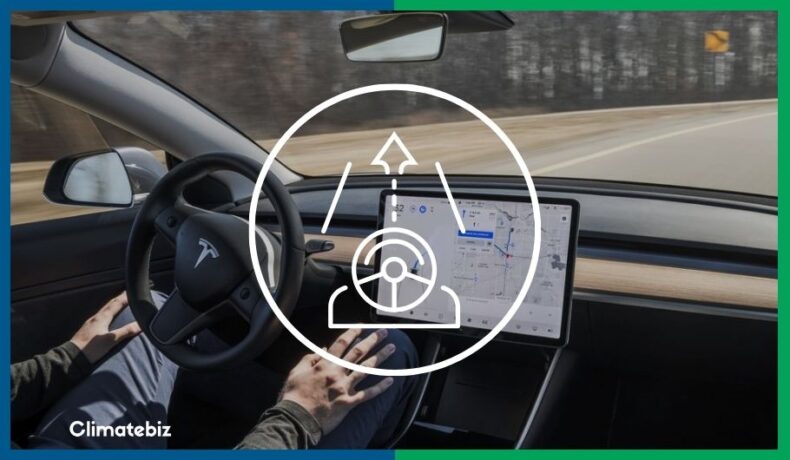Tesla Full-Self-Driving (FSD) vs. Autopilot: which one is capable of more? This is a question that prospective Tesla owners often ask.
Many people get confused between Autopilot and FSD. Fortunately for you, we’re here to clear things up by comparing the two.
All Tesla vehicles come standard with Autopilot. It is a level 2 autonomous feature that allows the car to steer, brake, and accelerate in its own lane.
Autopilot requires constant driver attention. Furthermore, the system only works in certain conditions. If the weather is poor or the car’s cameras/sensors are blocked, it will not work.
In contrast, Tesla’s FSD is the most expensive optional extra (offered on all Tesla models). It is a level 3 autonomous system that allows the car to change lanes by driver request, navigate by itself, and steer in cities (Beta option currently in testing). The driver must always pay attention; however, it is suitable for use in more scenarios than Autopilot.
The “sweet spot” between the two is Enhanced Autopilot. It truly is the best of both worlds. Yet, it’s around $6000 cheaper. The reason is that Enhanced Pilot is classified as an Advanced Driver Assistance System; thus, it’s classed under level 2 autonomy.
Table of Contents
What Are The Different Autonomy Levels?
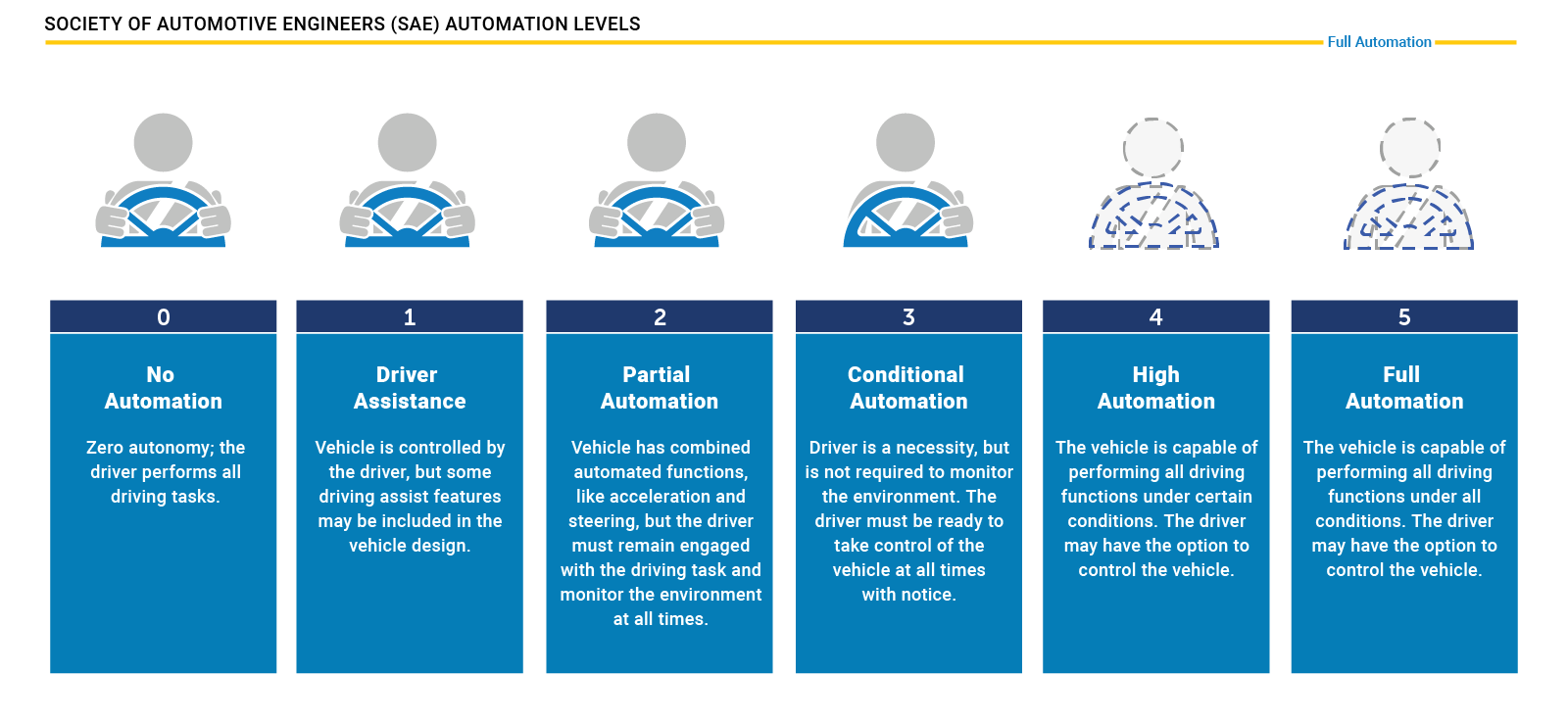
Autonomy levels are different categories that classify a car’s automation features. There are six levels, numbered 0-5.
- Level 0: you perform every function, from braking to navigating traffic.
- Level 1: your car will control speed or steering under certain conditions. Though you still carry full responsibility and must intervene if the system fails.
- Level 2 (partial automation): the car can steer, accelerate, and brake under certain circumstances. These systems often require that you keep your hands on the wheel.
- Level 3 (conditional automation): your car handles most driving functions in prime conditions. You’ll only intervene if your vehicle requests you to do so. However, you must still pay attention and keep both hands on the steering wheel.
- Level 4 (high automation): your car will do most of the driving except under conditions such as city driving or driving on more complex roads.
- Level Five (full automation): This is fully autonomous driving where your car will drive by itself via navigational commands — no pedals or steering wheel are used.
Tesla Full Self-Driving Vs. Autopilot

The following table outlines the differences between Tesla Full Self-Driving vs. Autopilot. Even the cheapest Tesla models come with Autopilot as standard, though you can fit the vehicle with Enhanced Autopilot or FSD for an additional fee.
| Basic Autopilot | Enhanced Autopilot | Full Self Driving (FSD) | |
|---|---|---|---|
| Price (USD) | $0 (Standard) | $6000 | $12,000 |
| Autonomy Level | Two | Two | Three |
| Parking Capabilities | None | Helps With Perpendicular/Parallel Parking | Helps With Perpendicular/Parallel Parking |
| Navigation Mode | No | Yes (Beta Testing) | Yes (Beta Testing) |
| Summon Features | No | Move Car in and Out of Complex and Tight Spaces | Move Car in and Out of Complex and Tight Spaces |
| Traffic Sign Recognition Features | No | No | Yes |
| Steering Functions | No | Assists Driver In Changing Lane (Driver Must Turn On Blinkers To Engage) | Assists Driver In Changing Lane (Driver Must Turn On Blinkers To Engage). City driving steering function in testing. |
| Year Launched | 2019 | 2016 (Re-Launched in 2022) | 2022 |
All systems require that you have your hands on the steering wheel at all times.
What Is Tesla Full Self-Driving?
Tesla’s FSD was launched in 2020 and has evolved massively since then.
It isn’t quite fully autonomous as it’s a level 3 autonomy system, meaning it can perform most (not all) tasks. As such, you must always have your hands on the wheel.
This system provides access to all self-driving features that Tesla currently offers. With it, your car can navigate itself around the city. Previously, you could only engage FSD on the highway due to AI constraints.
One of the most impressive features that FSD offers is Navigation Driving; This involves the car following the navigation system while driving itself.
An added feature, Smart Summon mode, allows the car to navigate through complex parking situations.
What Is Enhanced Autopilot?
Enhanced Autopilot is a level 2 autonomous driving system, and it’s very similar to FSD.
It allows your car to perform most FSD functions, including Navigation Driving and Smart Summon Mode.
Tesla has recently reintroduced Enhanced Autopilot into its optional extras list; the company removed it in 2019 as part of its Driver Assistance System restructuring. Tesla hasn’t stated why they’ve reintroduced it though it is likely because it’ll increase company revenue and profits.
Elon Musk has stated that FSD will become costlier as the AI evolves and the system becomes more autonomous.
What Is Tesla Autopilot?
Tesla Autopilot is free on all Tesla cars. It’s essentially adaptive cruise control and only allows your vehicle to perform basic tasks compared to Enhanced Autopilot and FSD. That being said, it’s classed as level 2 autonomous technology.
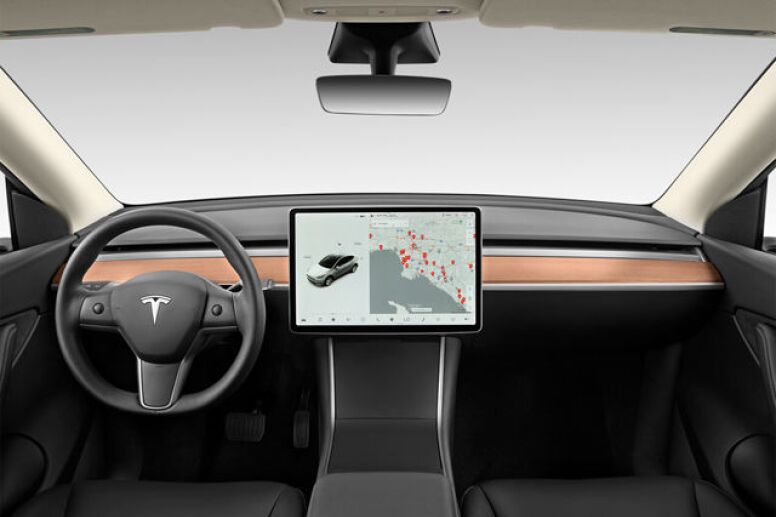
Basic Autopilot won’t allow your car to drive itself. It’s a feature primarily designed for those who rack up many miles on the highway and want something that’ll reduce driver input.
Autopilot regulates speed, braking, and steering only in your car’s lane.
How Do They Work?

All the systems mentioned above are complex and rely on AI and other computer algorithms. Tesla has spent billions of dollars developing its autonomous driving features, aiming to have a fully autonomous car on the road in the near future.
Tesla Full Self-Driving
FSD hardware requires sensors and cameras for operation. The software is very complex and involves a lot of advanced AI and algorithms to “dictate” what your car should be doing in a given scenario.
Tesla improves the software every single year via updates. However, as mentioned earlier, FSD still requires full driver attention (for now).
Enhanced Autopilot
Enhanced Autopilot also includes sensors and cameras for operation. The software also shares many vital components with FSD. However, since Enhanced Autopilot isn’t as advanced, the AI isn’t as complex.
In the future, Enhanced Autopilot software cars will veer away from the software used in FSD cars because FSD will become increasingly advanced and offer features not available on Enhanced Autopilot cars.
Autopilot
Like with the previous two functions, Autopilot includes sensors and cameras to operate. The software is nowhere near as complex as its costly counterparts. However, it’s a level 2 autonomous system, so it’s still quite advanced.
The Key Ingredient Common In All Tesla Cars
As you’ve probably noticed, all three systems are similar regarding hardware and software — pretty smart on the part of Tesla!
Sharing key components allows you to upgrade your autonomous driving system after purchasing your EV. This is done via the Tesla store on a monthly or one-off payment basis. No need to retrofit any new parts etc.
Furthermore, you must always have your hands on the wheel. Yes, this prevents, but it is also lawful behavior — most states force autonomous vehicle drivers to pay attention at all times.
Tesla FSD Vs. Autopilot: Key Differences
The key differences between Tesla Full Self Driving vs. Autopilot depend on the type of Autopilot and FSD involved.
Comparing FSD to Basic Autopilot is like comparing an old Nokia to the latest iPhone. Yes, they share similar software and hardware, but ultimately, FSD allows your car to almost drive itself while basic Autopilot is merely a driving assistance feature.
Comparing FSD to Enhanced Autopilot is very hard at this moment in time. Both share many similar features. However, Tesla will update the FSD system to offer more features that Enhanced Autopilot might not get.
Similarities
Both FSD and Enhanced Autopilot:
- Allow your car to drive by itself, following the navigation system;
- Allow your car to change lanes by itself on the highway at the driver’s request;
- Allow your car to navigate and drive itself in complex parking scenarios.
FSD takes things even further by allowing your car to drive itself around the city. It does this by recognizing traffic signs, including stop signs. This feature has just been released and is expected to become more advanced.
Overall, the price is the main difference between Tesla Full Self-Driving vs. Autopilot. The former is very costly, and Tesla will increase its price as time goes on.
Which Technology Is Right For You?
The issue with FSD is that many of its additional features are somewhat gimmicky. The rest come standard with the Enhanced Autopilot system. Therefore, it appears as if FSD offers very little for the money you’re paying.
Of course, FSD will become more advanced as time passes, but is that enough to justify its five-figure price tag? We’ll have to wait and see.
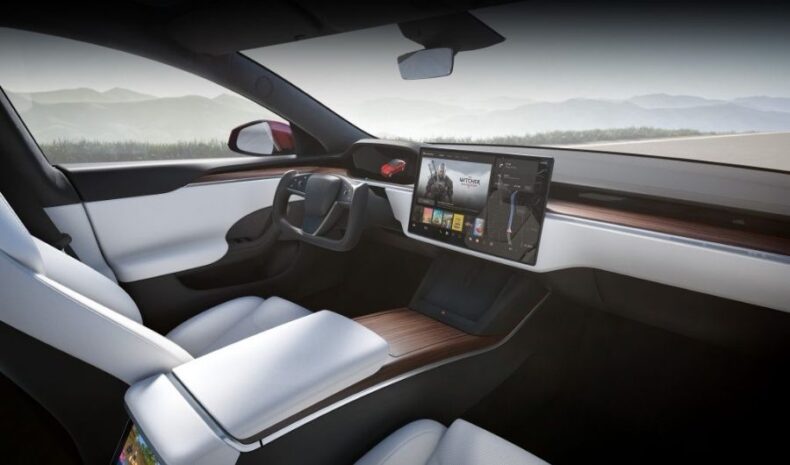
For most people looking for an autonomous car, Enhanced Autopilot ticks all the boxes. The car can change lanes, navigate and park (and more) by itself. In fact, most of the features on the Enhanced Autopilot system will probably not be used by most drivers.
The value of Enhanced Autopilot and FSD comes to light in scenarios where you’ve been driving for a long time and want to rest a little. However, these scenarios are sporadic — is that enough to justify their price tags?
Basic Autopilot is similar to most adaptive cruise controls in other cars. It’s a system geared towards highway driving, and just like FSD and Enhanced Autopilot, it helps you rest a little on longer journeys. The key difference between Basic Autopilot and Enhanced Autopilot/FSD is that Basic Autopilot is free.
For most people, Basic Autopilot is the best choice. It offers emergency braking assist, parking cameras, blind-spot monitoring, and more. This helps the average person drive safer and stay in control. It also allows drivers to reduce their interactions with the car on long journeys.
The Problem With Autopilot And FSD
There still seems to be a lack of trust in autonomous cars, especially in unpredictable situations; people want to be in control of their vehicles, especially in the event of danger.
Tesla’s Autopilot system has caused deaths. This year, a 2022 Model X SUV was involved in an accident that killed all three occupants. The car slammed into a curb on the highway and hit construction equipment. It was stated that the vehicle was in Autopilot mode.
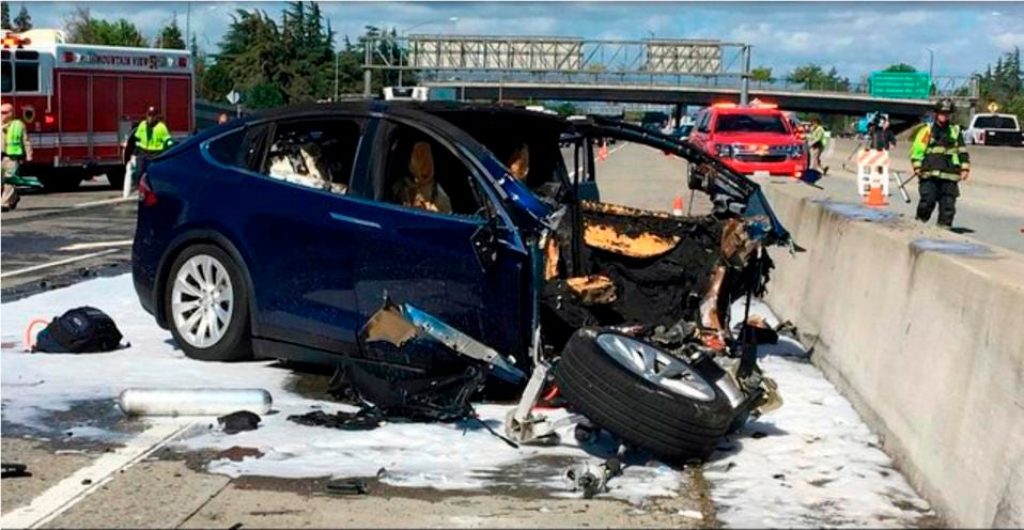
The National Highway Transport Safety Agency (NHTSA) is currently investigating thirty accidents potentially involving Tesla Autopilot. Out of these thirty incidents, fourteen deaths have occurred.
The NHTSA started this investigation after a fatal crash involving a Tesla Model S took place in 2016. In that incident, Autopilot was activated.
Tesla mentions many times on their website that Autopilot and FSD can only be used alongside driver supervision. However, both terms often confuse people regarding the capabilities they possess. Many believe that Autopilot or FSD allows the car to drive entirely by itself. That, as mentioned earlier, is not the case.
Some people even confuse Tesla’s “Autopilot with the Autopilot system used in planes. Autopilot systems in planes can fly the plane via computer inputs directed by the pilots. Autopilot systems in Tesla vehicles cannot. Therefore, some argue that the term “Autopilot” is somewhat misleading.
There have been dangerous illegal incidents whereby Tesla owners have performed outrageous acts while Autopilot/FSD is activated. These include sleeping, browsing their phones, and even removing themselves from the driver’s seat. This ultimately puts the driver and other members of the public at risk since Autopilot/FSD cannot deal with all scenarios on the road.
Final Thoughts
That’s it for our tesla full self-driving vs. autopilot discussion!
It’s safe to say that is a pioneer in the autonomous vehicle industry, and they continue to evolve each year.
Autopilot and FSD are two of the world’s most advanced autonomous driving systems, but their safety is often questioned.
Some argue that Tesla cars are ready for autonomous driving; they have the software and hardware. However, the critical issue that continues to hinder Tesla’s autonomous driving journey is unforeseen or unpredictable situations.
The road isn’t a predictable place; you have issues related to weather, bad drivers, road works, and more. Some of these issues have been key reasons behind Autopilot and FSD failures that have caused deaths.
For tech lovers, Tesla Full Self-driving is the dream. However, it’s very costly, so it requires careful consideration. Basic Autopilot, in comparison, suits the “average driver’s” needs.
Last but not least, you have the best of both worlds — Enhanced Autopilot.

